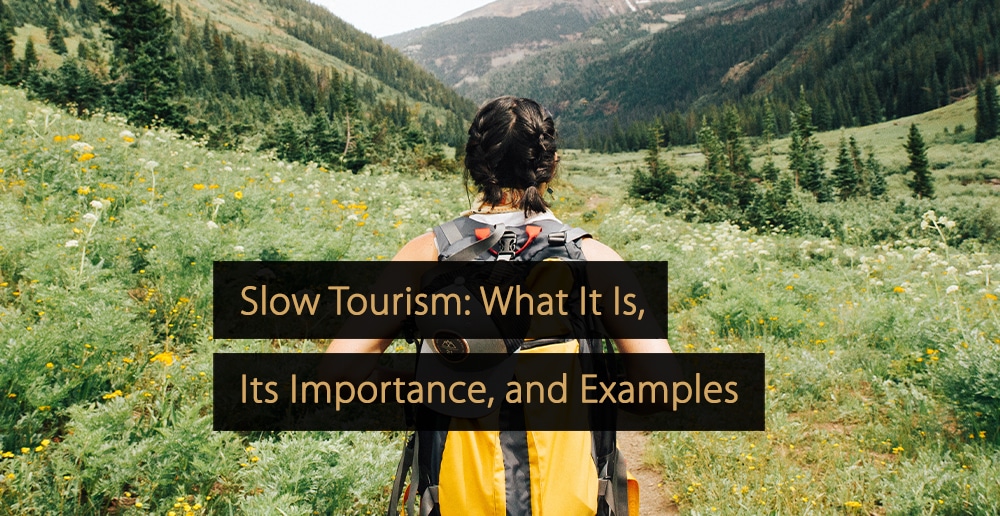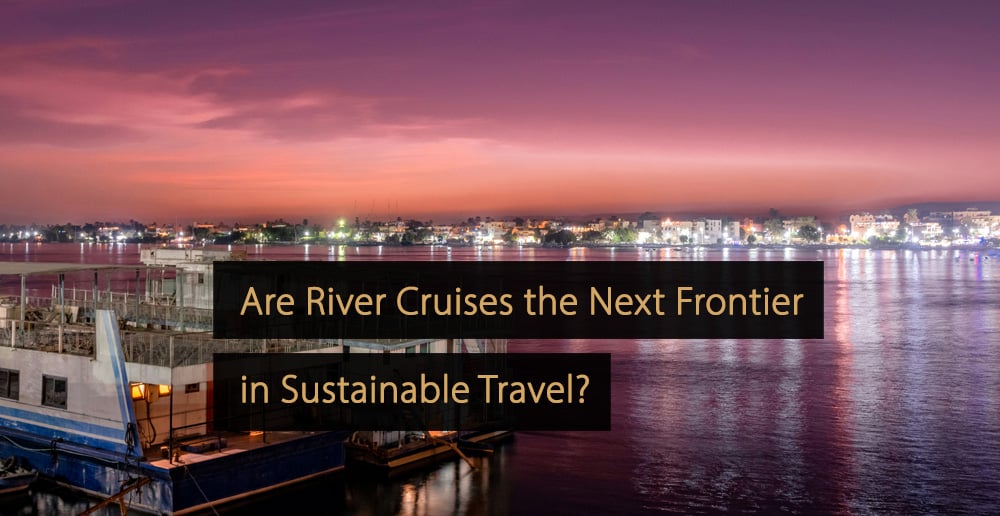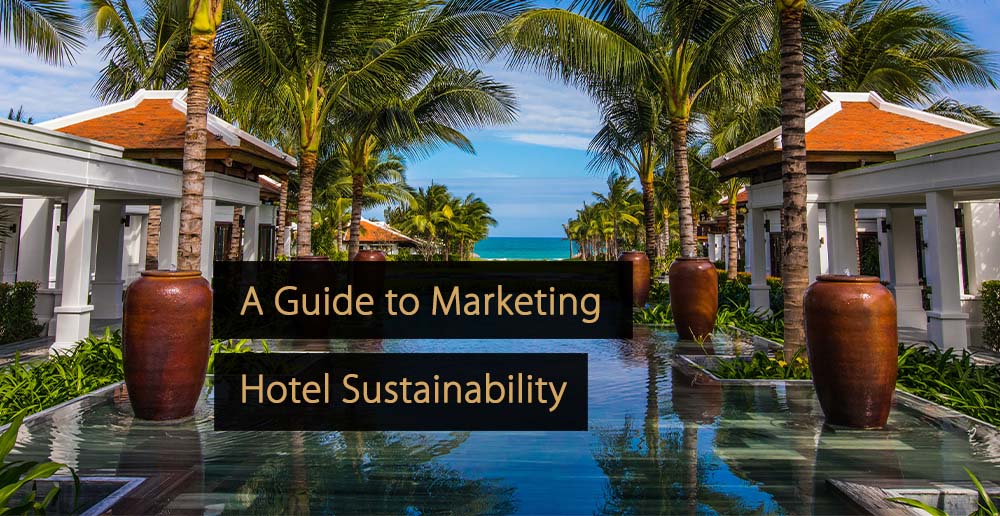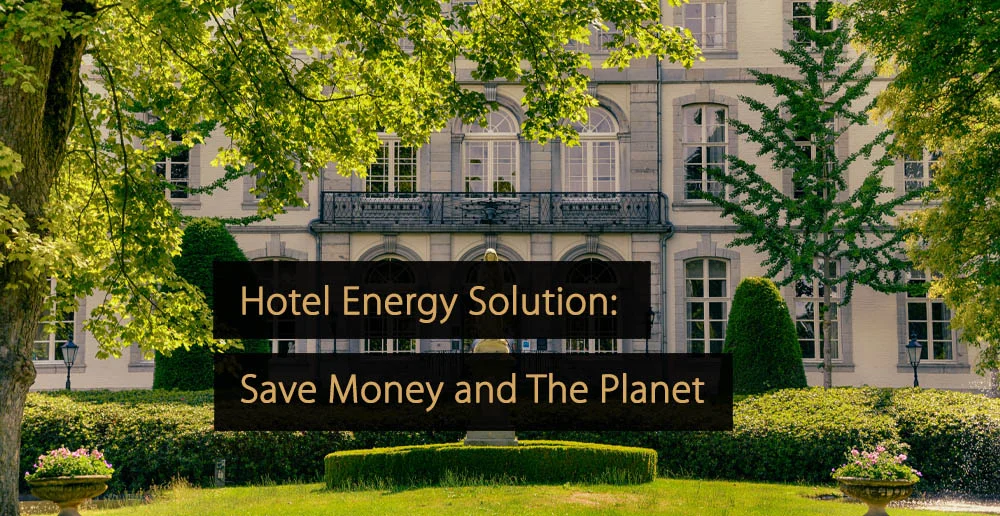Slow tourism is an emerging tourism trend that serves as an antidote to some of the negative aspects of mass tourism. At the same time, slow tourism places a strong emphasis on sustainability, engagement with local culture, and fully appreciating travel experiences. Here, you can learn more about slow tourism, including how it is defined, its growing importance, and how it can be beneficial, complete with examples.
Table of Contents:
- What is Slow Tourism?
- What is the Difference Between Slow Tourism and Eco-Tourism?
- Why is Slow Tourism Important?
- What Are the Benefits of Slow Tourism?
- 5 Examples of Slow Tourism
- What Are Some Popular Slow Tourism Destinations?
- Links Between Slow Tourism and Sustainable Tourism
- The Relationship with Eco-Tourism
- Sustainable Tourism Development
What is Slow Tourism?
Slow tourism is an approach to tourism that is presented as an alternative to mass tourism. It forms part of the wider sustainable tourism movement. It can be seen as the tourism industry equivalent of the ‘slow food’ movement, which emphasizes the enjoyment of local food and traditional recipes over fast food and mass consumption.
With this in mind, slow travel places an emphasis on discovering the culture, history, and characteristics of the local area, rather than creating an itinerary and attempting to cram in as many different travel experiences as possible. In addition to emphasizing meaningful and authentic engagement with a travel destination, slow tourism also promotes concern about the local environment and sustainability in general.
Video: Slow Travel
What is the Difference Between Slow Tourism and Eco-Tourism?
With slow tourism and eco-tourism focusing strongly on sustainability within the tourism industry, it can be difficult to understand how the two concepts differ. Nevertheless, while slow travel can be an example of eco-tourism, it is also a distinct concept, with unique defining traits or characteristics.
Despite the sustainability focus of slow tourism, this is a by-product more than a fundamental feature. In essence, slow tourism is primarily characterized by tourists prioritizing fewer, more meaningful experiences and focusing their activities in the local area instead of focusing on commercial experiences and trying to squeeze as many activities into their trip as possible. There will also usually be less focus on schedules and itineraries.
By contrast, eco-tourism is a form of tourism that promotes responsible travel to natural areas, emphasizing supporting local people and businesses, enriching the local area, and limiting the damage caused by the tourism industry.
Why is Slow Tourism Important?
Slow tourism is one of the emerging tourism trends that could help make the tourism industry more sustainable and viable in the years to come. It provides a more environmentally friendly means of enjoying travel experiences, without being overtly sold to customers as a form of eco-tourism.
For travelers, slow travel provides many benefits, too, including increased engagement with the locations being visited, more opportunities for self-reflection, and more time to enjoy travel experiences and take things in properly. In many ways, slow travel can be viewed as a potential antidote to some of the negative traits of mass tourism.
What Are the Benefits of Slow Tourism?
Aside from offering a different way for tourists to enjoy their travel experiences, there are two main areas where slow tourism can benefit tourist destinations and the people who live in the local area.
Environmental Benefits
Many of the problems associated with mass tourism are centered around environmental concerns. For example, an influx of tourists to an area will inevitably cause issues in terms of waste and the use of natural resources. Of course, the build-up of cars and services the airline industry provides also creates pollution.
Slow tourism aims to reduce travelers’ carbon footprint by slowing down the entire experience. This could mean a tourist uses train services to make their way to their destination, rather than relying on the speed of planes. It also means spending more time enjoying each activity, which can reduce carbon emissions associated with local travel.
Cultural Benefits
A fundamental part of the slow tourism concept involves slowing down and enjoying an area for what it offers. This can bring about several significant cultural benefits for the region because it means local businesses are not designed to cater to tourists looking for constant stimulation, and it helps to avoid situations where a location becomes known primarily as a tourist destination rather than a location where people live.
In addition, slow travel can help to avoid situations where a location becomes overrun with cars, entertainment venues, and other offerings. This helps to avoid rapid cultural shifts, especially in smaller towns and cities.
5 Examples of Slow Tourism
Now that you understand what slow tourism is, how it works, what it aims to achieve, and how it benefits travelers and local communities, it is worth exploring some examples of slow tourism in action. Below, you can learn about some of the main types of slow travel enjoyed by travelers worldwide.
1. Religious Tourism
Religious tourism occurs when travelers visit a specific location for spiritual reasons. Many of the world’s religions emphasize the idea of ‘pilgrimage’, where travelers go on a spiritual journey to a place that holds meaning, which can be seen as an example of slow travel. However, religious sightseeing is another example of religious tourism, focusing on seeing artifacts, monuments, and buildings of significance.
2. Backpacking
Backpacking is a form of travel usually characterized by long stays, reliance on public transport and low-cost accommodation, and only taking possessions that can be carried in a backpack. It fits well with slow tourism because backpacking is often based on adventure, self-discovery, and meaningful experiences.
3. Hiking Trips
Hiking trips are slow tourism based on enjoying long walks in natural environments. Hiking will typically focus on established hiking routes or trails, allowing tourists to experience natural beauty areas. Some popular hiking routes also have cultural or historical significance.
4. Culinary Tourism
As the name suggests, culinary tourism is a form of slow tourism, which is based on the consumption of enjoyable food. Generally, this will involve visiting locations and sampling the offerings of multiple restaurants over the duration of a stay, with an emphasis on authentic and traditional foods, prepared using local ingredients.
5. Cycling Trips
Cycling trips can also be an example of slow tourism because they are often focused on the experience associated with cycling, and they are significantly more sustainable than trips based on driving. Travelers may cycle to their destination or rent a bicycle there. Cycling trips may involve traveling to different locations on a bike, or they may involve riding along well-known cycle paths or participating in cycling meet-ups.
What Are Some Popular Slow Tourism Destinations?
Although slow tourism can occur when people visit a huge range of locations, some destinations are especially popular with tourists looking to explore this approach.
South-East Asia
South-East Asia is an especially popular slow travel destination, and the hospitality industry in many countries in the region can provide authentic experiences for travelers who wish to take their time and fully engage with their destinations. In particular, countries like Thailand, Vietnam, Cambodia, and Laos are good options.
Some travelers go backpacking across the region, staying in cheap accommodations and utilizing public transport, including buses and boats, to navigate. Others opt for longer stays in a single location, taking in the area’s culture and exploring temples, ruins, and other places of historical or cultural interest.
Camino de Santiago
Camino de Santiago, or the Way of St. James, is a great option for those interested in slow tourism and hiking. It refers to a network of standard routes pilgrims take, ultimately leading to the Santiago de Compostela Cathedral and World Heritage Site in Galicia, Spain.
The Way of St. James has been a popular pilgrimage route for Catholics since the 9th century. The network of routes can be accessed from almost all Western European countries, including the United Kingdom, France, Germany, Spain, Portugal, Italy, Austria, and Switzerland, offering tourists great options regarding their planned route.
Continental Divide Trail
The Continental Divide Trail is a popular slow tourism trail for backpackers, hikers, cyclists, and other travelers wishing to explore the United States. The trail extends from the border with Canada in the north of the United States down to the border with Mexico in the south.
Some tourists traveling along the trail opt to ride on horseback for some of the ways, while many other cultural experiences can be enjoyed. The route spans 3,028 miles, or 4,873 km, providing a great challenge.
Mongolia
Mongolia is another option becoming increasingly popular with those interested in slow travel experiences. The country offers a combination of natural beauty, wildlife, and places of historic interest.
While staying in the country, some tourists visit the Dukha people, or Tsaatans, who live a nomadic lifestyle in the north. The community is especially well-known for the practice of herding reindeer, and visits to the region can provide tourists with a once-in-a-lifetime chance to engage with a different way of life.
Links Between Slow Tourism and Sustainable Tourism
Sustainable tourism is a practice where the environmental, social, and economic impacts of tourism in a particular region are explored, and steps are taken to minimize this impact, to make travel more sustainable. This links very clearly with slow tourism, which is seen as sustainable tourism.
To learn more about sustainable tourism, the different types of sustainable tourism, and the advantages of this approach, check out the “Sustainable Tourism Guide: What is, Why Important, Examples and More…” post.
The Relationship with Eco-Tourism
Eco-tourism is a specific form of sustainable travel, which is focused on tourism to places of natural beauty, with a focus on ecological conservation and protecting the natural environment. Again, this ties in well with slow travel, which aims to promote sustainability and meaningful engagement with destinations.
You can learn more about eco-tourism and better understand the relationship between this and slow tourism by reading the “Ecotourism: What it is, Advantages & Disadvantages, Examples & More“ article.
Sustainable Tourism Development
Sustainable tourism development can be understood as developing the tourism industry in a region that is viable, sustainable, and delivers long-term social and economic benefits for people in that location. Promoting slow tourism experiences can assist with this by ensuring a region attracts the right demographics.
If you would like to know more about sustainable tourism development and if you would like to build an understanding of how it can connect with slow tourism, read the “Benefits of Sustainable Tourism Development” post.
Slow tourism emphasizes sustainable travel, fulfilling travel experiences, and an awareness of some of the negative aspects of mass tourism. It is increasingly important in a world facing the threat of climate change, as well as the challenges associated with preserving cultures, traditions, and communities.
More Tips to Grow Your Business
Revfine.com is the leading knowledge platform for the hospitality and travel industry. Professionals use our insights, strategies, and actionable tips to get inspired, optimize revenue, innovate processes, and improve customer experience.Explore expert advice on management, marketing, revenue management, operations, software, and technology in our dedicated Hotel, Hospitality, and Travel & Tourism categories.
This article is written by:
Hi, I am Martijn Barten, founder of Revfine.com. With 20 years of experience in the hospitality industry, I specialize in optimizing revenue by combining revenue management with marketing strategies. I have successfully developed, implemented, and managed revenue management and marketing strategies for individual properties and multi-property portfolios.









I am glad that I came across your article because nowadays slow tourism is really popularized and gaining momentum, but before this moment I hadn’t had a clear view of this concept. After reading your article, I realized all its significance and benefit for our life, which is really important. Of course, slow tourism is the best way to get huge pleasure from traveling and from every moment, restoring your resources and getting a great burst of energy. It is so wonderful that slow tourism makes such a global sense for the environment because a lot of people can make their own contribution, by choosing this type of tourism. I fall in love with hiking trips because I think that it is the best way to become closer to nature and be filled up with the feeling of relaxation, experiencing areas of natural beauty.
This very nice article about slow tourism. Thank you for the information. Revfine is a very nice blog!
I love slow tourism! It’s a great way to get to know a place better and learn about the culture. I’ve been to a few places known for their slow tourism, and it’s been a great experience.
Great article. I am writing blogs for sustainable tourism, and one of my blogs will be about various types of sustainable travel and tourism. Your article has given me more information about slow travel. I will reference you in my blogs. The goal of my blogs is to bring about awareness of the importance of sustainable travel.
My website is under construction. I will update Revfine.com each time I reference your work.
I agree with the author that slow tourism is the way to go. As someone who has experienced fast-paced tourism in popular destinations, I can attest to the stress and disconnection that comes with it. By slowing down and immersing ourselves in local cultures, we can foster a deeper appreciation for the places we visit and the people who call them home. Thank you for shedding light on this critical topic!